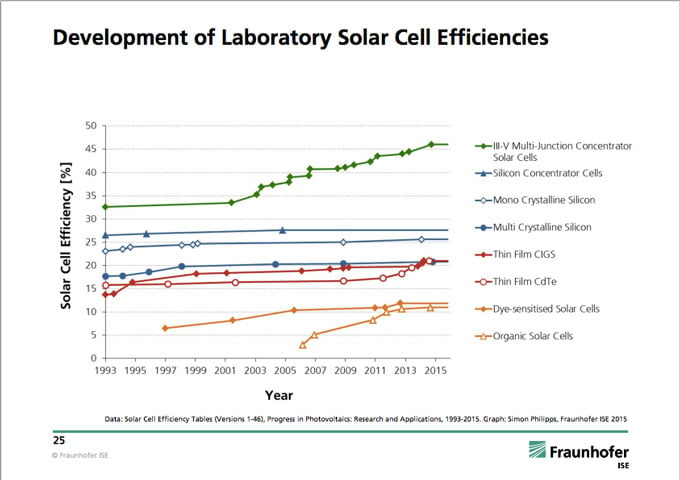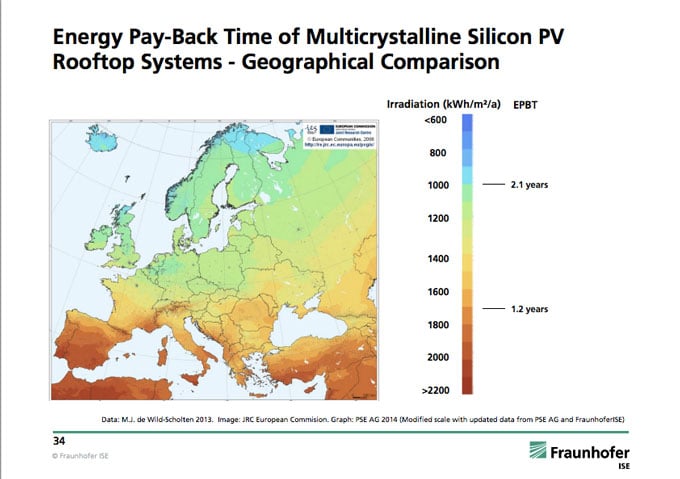Typical Solar Panel Performance Degradation due to Micro Cracks
Double Glass Solar Panels
PV Soiling
Maxim cell optimization
Half Cut Solar Modules
Solarskin Technology
Frameless Solar Modules
Reliability of Solar Panels
[...]
 Development of solar cell efficiencies in the laboratory (Courtesy: Fraunhofer)[/caption]
Development of solar cell efficiencies in the laboratory (Courtesy: Fraunhofer)[/caption] Energy payback time and geographical comparison (Courtesy: Fraunhofer)[/caption]If you want more information on this topic, have a look at the The Fraunhofer annual Photovoltaic Report. It has excellent data on energy payback time. You can download the 2015 report here.
Energy payback time and geographical comparison (Courtesy: Fraunhofer)[/caption]If you want more information on this topic, have a look at the The Fraunhofer annual Photovoltaic Report. It has excellent data on energy payback time. You can download the 2015 report here.
Brian Donovan
on 29 Nov 2016